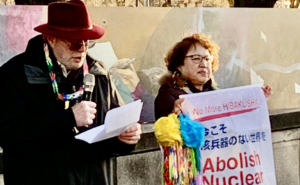Candace Howze is a freelance writer and education professional based in North Carolina.
What age is too young to hurl a racial slur?
My dad first heard one thrown at him in the first grade — by another first-grader. For my mom, it occurred in the fourth grade. Several years ago, I mentored a Black middle schooler who told me that, as a younger child, he had been called the n-word at summer camp.
Now, as a college counselor, I read essays by Black and brown high schoolers recounting the racial trauma they’ve experienced from painfully young ages: children as young as 6 years old, called “dirty” for having dark skin, socially ostracized for their complexion and told to chemically straighten their hair so they could look pretty. These distressing rites of passage occurred in the most innocent of settings: school playgrounds.
So when I hear parents argue that their school-age children are “too young” to learn about race, I’m baffled.
That’s one of the arguments voiced by parents in a recent CBS News documentary, “The Trials of Critical Race Theory,” about the current fight over how and whether race and racism should be taught in schools.
“I don’t want them to see racism yet — to engage, to learn racism,” Robin Steenman, a member of Moms for Liberty — which fashions itself a “parental rights” group — says in the documentary. She adds: “We feel that’s too heavy for a second-grader.”
No one wants a child to suffer from exposure to racism. But how can a second-grader be too young to learn about race when first-graders have called my students the n-word? If children are not too young to learn a hateful word and inflict it on a peer, they are certainly not too young to be taught about racism.
I grew up hearing family stories reflecting the racial hostilities of American society across the generations — from the 1940s-era tales of my grandparents and their siblings, to my parents’ accounts from the 1960s and ’70s. Through these stories, I learned that racial conflict was inescapable, something endured over time and absorbed by the youngest minds. My family knew that protecting my innocence from the ugliness of racism was not an option in a nation in which white supremacy lurked among swing sets and jungle gyms.
In the CBS documentary, Steenman points to a photo from a book, depicting firemen in Birmingham, Ala., spraying water from their hoses at Black children, and laments that teaching children about racism too early could have a negative effect — not on their well-being, but on the way they revere first responders. “They can teach history,” she says, “but let’s not teach racism.”
Research tells us a 4-year-old knows basic racial stereotypes, biases absorbed through the consumption of media and their immediate environments. This means that by the time Black and brown children board a school bus for the first time, they may already know that their race is a handicap — a shame, a thorn in the side of Western Whiteness. If children have so much as seen a classic Disney movie, they’ve been exposed to racial stereotypes — well before they can understand the words “critical,” “race” or “theory.”
We are lying to ourselves if we contend that keeping discussions about race out of the classroom will protect our children from racial conflict. Banning the teaching of critical race theory — as the state school board in Alabama, a state with one of the worst educational ratings in the country, recently did — will not protect Black or brown kids from experiencing racism. And it most certainly will not protect them from being the targets of hate — not in a state that has one of the most gruesome legacies of racial violence.
If children are already learning how to be racist toward their peers — whether from family or friends, state agencies, or whatever flashes across their screens — isn’t it reasonable to presume that one of the best places to counteract this racist training is in the classroom, where instructors might encourage questions and lead sensitive, nuanced discussions?
Our children’s minds are impressionable and filled with potential. While the topic of race is complex, the only way to preserve the innocence — the goodness — of our children is to teach them the role racism has played in our nation’s history and within modern society, so they won’t repeat their elders’ mistakes.
Most important, this history can be taught with discernment instead of castigation, empowerment rather than pity. It is up to the adults in the room to find and enact that balance, so we can inspire our children to kindness, despite the horrors of our past.




